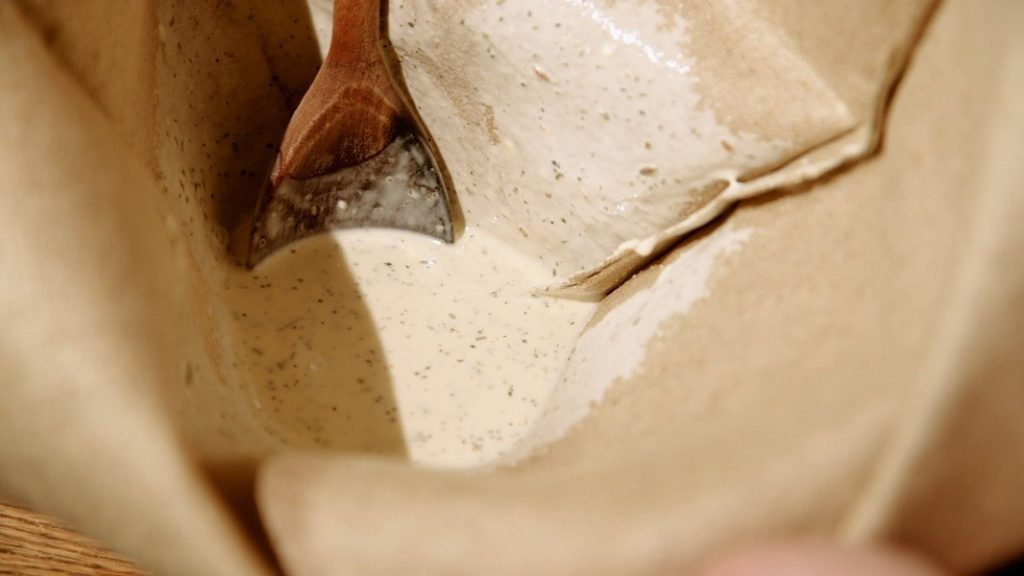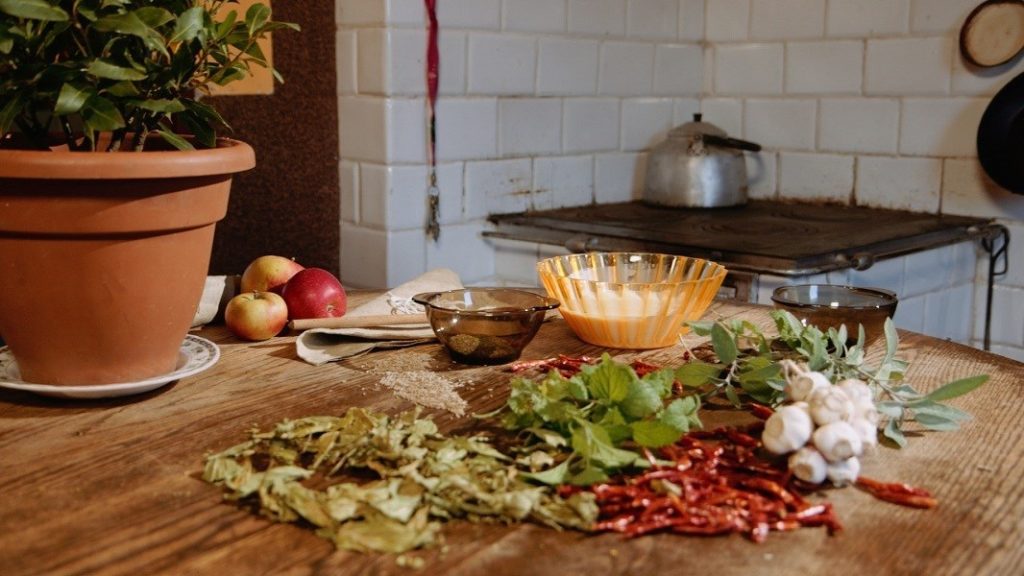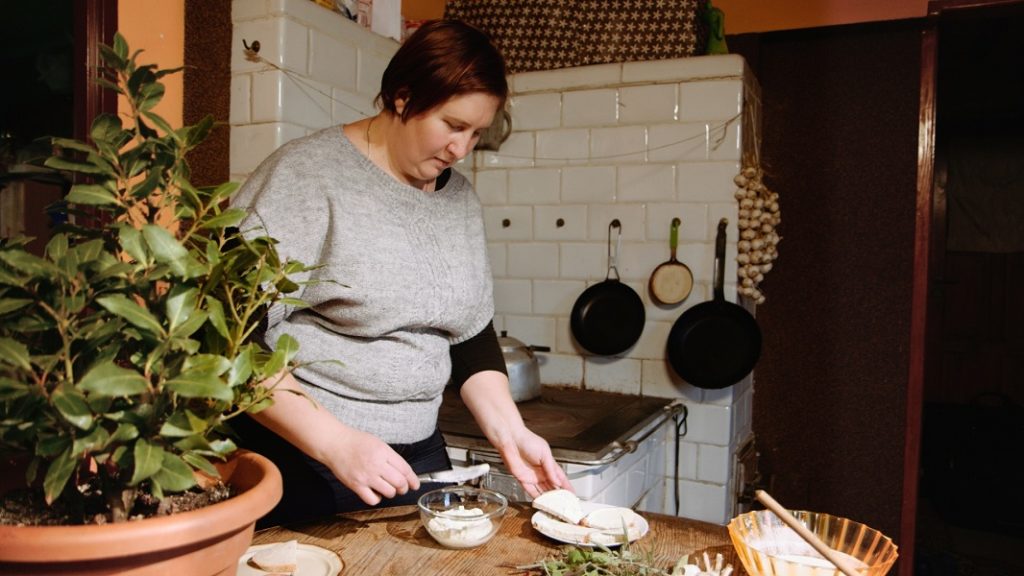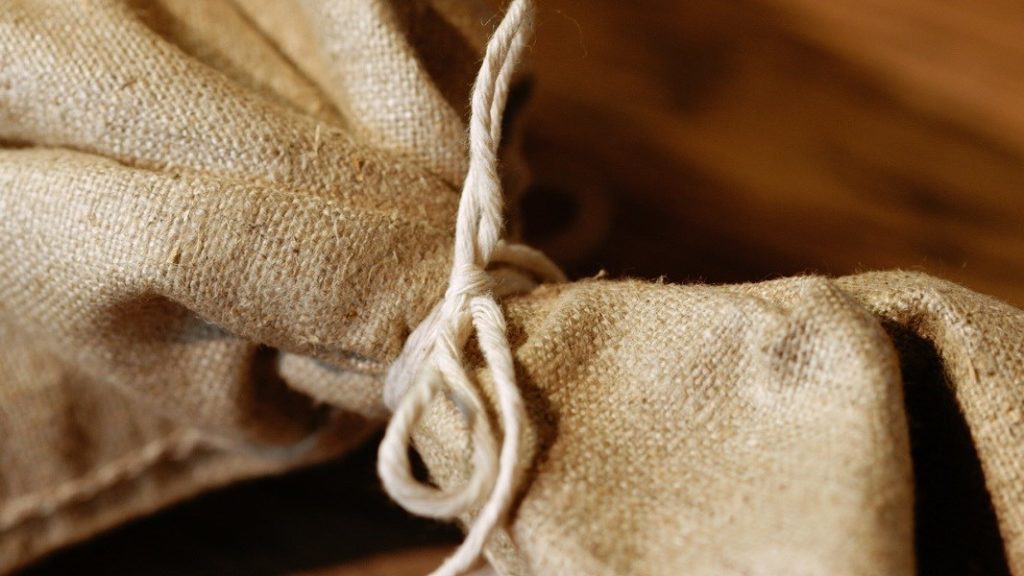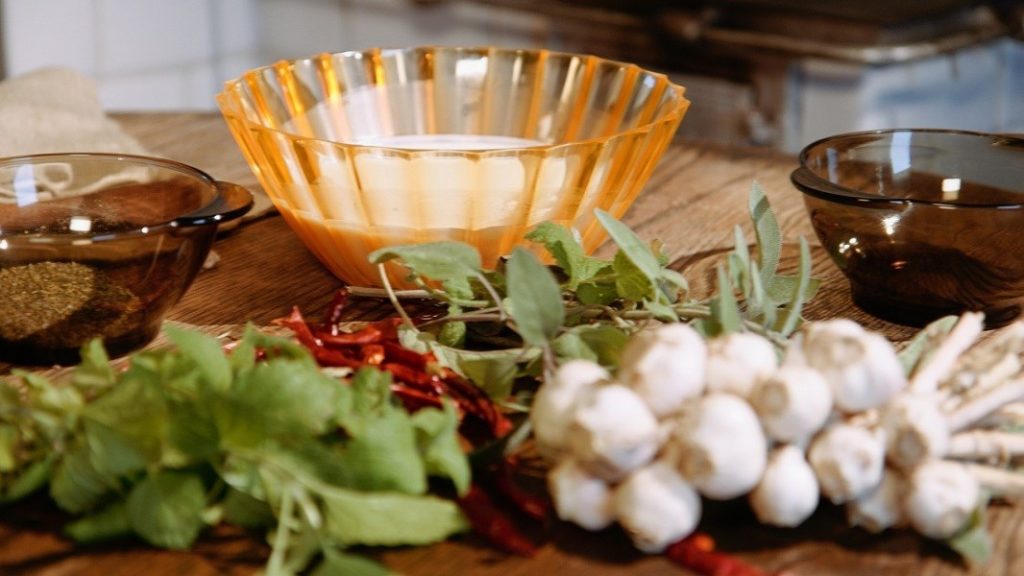Buried cream
It is made in a surprising way… by burying in the ground. Ser ziemny, cheese also called zakopianiec or truposz, was created in the melting pot of traditions of settlers from Mazowsze, Lithuania and Southern and Northern Ruthenia. This unusual dish fits perfectly into nutritional trends of returning to nature as well as the trend for not obvious delicacies.
Ser ziemny has been prepared by housewives from Stara Kornica municipality for several generations. This delicacy, the consistency of which resembles processed cheese, is made with double sweet cream, salt and herbs. For the cream to be thick it should remain in a pot for around two days. Mass mixed with herbs is placed in a linen bag and then, buried in the ground for two days. During this time, the ground absorbs water and, as a result of this process, cheese is made that has a unique flavour and consistency allowing spreading it on bread. In Stara Kornica each housewife prepares ser ziemny according to her own taste and adds dried or fresh herbs: cumin, dill, marjoram or dried parsley.
Below, an old recipe for this delicacy:
Half a pot of fresh, thick cream pour into a new, thick tablecloth, tie closely over the cream and put into a hole dug into fresh, black ground, but, not sandy, half-elbow deep, cover the top with a cloth folded in two so that no ground falls into the pot. Cover with ground, pat and put a stone over it. On the second day take the quark cheese out and tie it more tightly so it is shaped better. It can be also taken as it is and put on a plate. Cream should be slightly salted and mixed with cumin, depending on preference, before burying. It must be eaten soon as it goes bad quickly. (K. Białozierska, Nowa Praktyczna Gospodyni Litewska, Warsaw 1989).
In Mazowiecki Szlak Tradycji ser ziemny is made by Ms Anna Szpura, an expert in local traditions, especially cuisine. As a result of her efforts, cheese delicacy was entered into the Mazovian voivodeship list of traditional products. In 2012, it won 1st prize in the competition “Nasze kulinarne Dziedzictwo – Smaki Regionów”. Ms Anna also owns a beehive “Mała Pszczółka”, which, in 2012, was connected with “Sieć Dziedzictwa Kulinarnego Mazowsza”.



